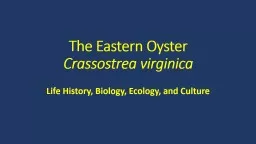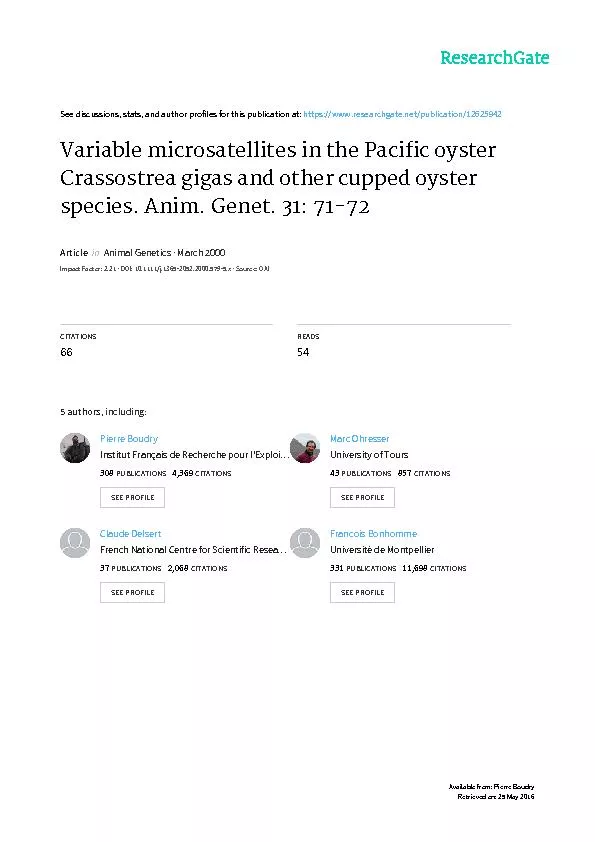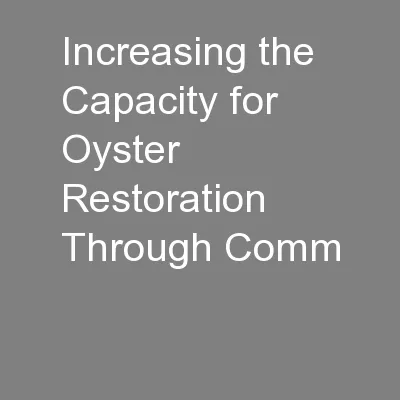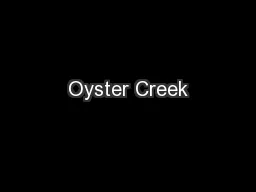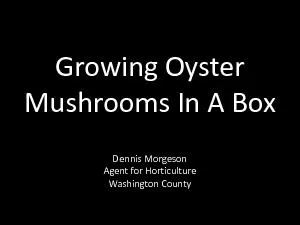PPT-The Eastern Oyster Crassostrea
Author : lois-ondreau | Published Date : 2018-02-18
virginica Life History Biology Ecology and Culture Oyster Classification Kingdom Animalia Phylum Mollusca Class Bivalvia Order Ostreioida Family Ostreidae
Presentation Embed Code
Download Presentation
Download Presentation The PPT/PDF document "The Eastern Oyster Crassostrea" is the property of its rightful owner. Permission is granted to download and print the materials on this website for personal, non-commercial use only, and to display it on your personal computer provided you do not modify the materials and that you retain all copyright notices contained in the materials. By downloading content from our website, you accept the terms of this agreement.
The Eastern Oyster Crassostrea: Transcript
Download Rules Of Document
"The Eastern Oyster Crassostrea"The content belongs to its owner. You may download and print it for personal use, without modification, and keep all copyright notices. By downloading, you agree to these terms.
Related Documents

